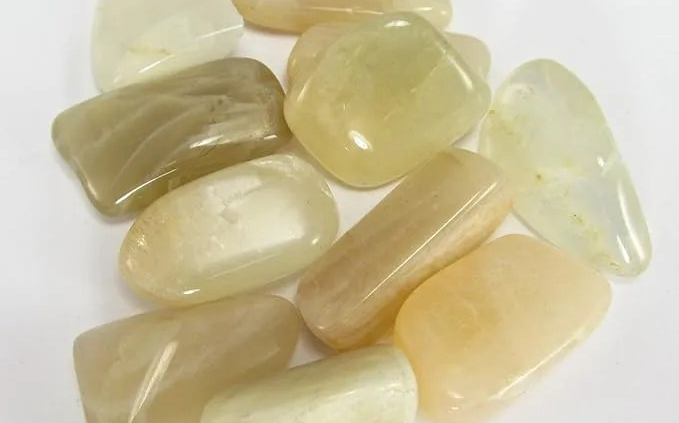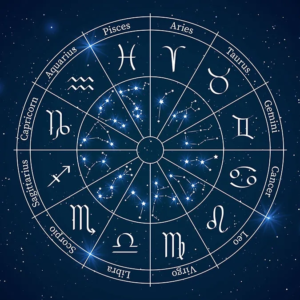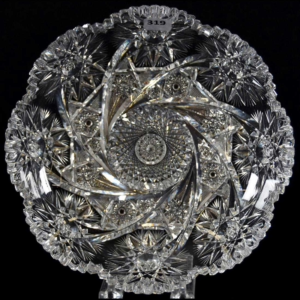Yellow Moonstone
Yellow Moonstone, also known simply as “Moonstone,” is a captivating gemstone renowned for its ethereal and luminous appearance. It is a variety of the mineral feldspar, specifically belonging to the orthoclase and albite groups. Yellow Moonstone gets its name from its characteristic play of colors, resembling the soft, glowing radiance of the moonlight. This unique optical effect, known as adularescence or schiller, sets Moonstone apart from other gemstones and makes it highly sought after in the world of jewelry and gem collecting.

Geological Formation and Composition: Yellow Moonstone is formed within igneous rocks, such as granite and pegmatite, as a result of the slow cooling and solidification of molten rock deep within the Earth’s crust. As the rock cools, the feldspar minerals present in it, primarily orthoclase and albite, undergo a unique structural arrangement that creates microscopic layers or inclusions. These alternating layers of different feldspar compositions scatter light, causing the captivating play of colors that characterize Moonstone. The most common colors for Moonstone include yellow, peach, blue, and white, but it can also exhibit shades of gray and brown.
One of the most distinctive features of Yellow Moonstone is its opalescent or milky appearance, which is a result of the scattering of light by the internal layers and inclusions. This is what gives Moonstone its mesmerizing glow, which seems to move and shimmer as the stone is viewed from different angles.

Historical Significance and Folklore: Moonstone has a rich history and is steeped in folklore and mythology from various cultures:
- Ancient Rome and Greece: Moonstone was believed to be formed from the rays of the moon. Both ancient Romans and Greeks associated it with their lunar deities and believed that wearing Moonstone would bring good fortune and protection.
- Hinduism: In Hindu mythology, Moonstone is associated with the sacred deity Chandra, who is believed to be the moon god. It is considered a powerful talisman that enhances spiritual growth and wisdom.
- Arabian Folklore: Arabian legends held that Moonstone was created from the tears of the moon, and it was thought to possess the power to bring love and reconciliation between estranged lovers.
- Victorian Era: Moonstone enjoyed a resurgence in popularity during the Victorian era. It was often used in jewelry design during this period, symbolizing femininity and intuition.
- Modern Beliefs: Today, Moonstone is still regarded as a stone of intuition, balance, and emotional healing. It is often associated with the crown chakra, believed to enhance psychic abilities and promote inner peace.
In addition to its historical and mystical significance, Moonstone is a popular choice for jewelry, particularly in rings, earrings, and pendants, due to its mesmerizing and iridescent appearance. It is also used in meditation and holistic practices for its perceived spiritual and healing properties. Whether appreciated for its geological uniqueness, cultural significance, or aesthetic beauty, Yellow Moonstone continues to captivate and enchant people around the world.
Contents
- Physical Properties of Yellow Moonstone
- Occurrence and Sources
- Uses and Applications
Physical Properties of Yellow Moonstone

Yellow Moonstone, like other varieties of Moonstone, exhibits a range of physical properties that contribute to its unique appearance and characteristics. Here are some of the key physical properties of Yellow Moonstone:
- Color: As the name suggests, Yellow Moonstone is primarily yellow in color. However, it can display a wide spectrum of colors, including yellow, peach, blue, white, gray, and brown. The most desirable Yellow Moonstones often exhibit a warm, golden-yellow hue.
- Adularescence: The most distinctive feature of Moonstone is its adularescence or schiller, which is an optical effect that creates a soft, glowing sheen on the surface of the stone. This schiller effect is caused by the scattering of light by the microscopic layers and inclusions within the stone. It gives Moonstone its characteristic moonlight-like appearance, which seems to move and shimmer when the stone is viewed from different angles.
- Transparency: Yellow Moonstone is typically translucent to semi-translucent. Its opalescent appearance is a result of the scattering of light within the stone, giving it a milky or hazy appearance.
- Luster: Moonstone has a vitreous to pearly luster. The schiller effect enhances its pearly sheen and contributes to its unique visual appeal.
- Hardness: Yellow Moonstone has a Mohs hardness scale rating of 6 to 6.5, making it relatively soft compared to some other gemstones. This means it is susceptible to scratching and should be handled and stored with care to avoid damage.
- Cleavage: Moonstone exhibits two distinct cleavage directions, which means it can cleave or break along certain planes. This characteristic influences how the stone is cut and shaped during the gemstone cutting process.
- Specific Gravity: The specific gravity of Moonstone typically ranges from 2.56 to 2.59, which is relatively low compared to many other gemstones. This lower specific gravity contributes to its lightweight feel when worn as jewelry.
- Chemical Composition: Yellow Moonstone is primarily composed of two types of feldspar minerals: orthoclase and albite. These minerals belong to the group of silicate minerals and have a chemical formula that includes aluminum, potassium, sodium, and silicon.
- Crystal System: Moonstone belongs to the monoclinic crystal system, which means its internal atomic structure is characterized by unequal lengths and angles of its crystal axes.
- Durability: Due to its moderate hardness, Yellow Moonstone is suitable for jewelry wear but should be protected from rough handling and contact with other harder materials to prevent scratching or chipping.
These physical properties collectively contribute to the unique allure and beauty of Yellow Moonstone, making it a popular choice for jewelry and a stone with distinct optical and aesthetic characteristics.
Occurrence and Sources

Yellow Moonstone, like other varieties of Moonstone, is primarily found in specific geological settings and regions around the world. Here are some of the notable occurrences and sources of Yellow Moonstone:
- Sri Lanka: Sri Lanka is one of the most famous and significant sources of Yellow Moonstone. The country has a long history of producing high-quality Moonstones, including those with a warm yellow or peachy hue. The city of Meetiyagoda in Sri Lanka is particularly renowned for its Moonstone mines.
- India: India is another major producer of Moonstone, including the yellow variety. The state of Orissa (Odisha) in India is known for its deposits of Yellow Moonstone, often referred to as “Chandrakant Mani” in Indian gemological terms. Indian Yellow Moonstones are highly regarded for their color and quality.
- Madagascar: Madagascar is becoming an increasingly important source of Moonstone, including Yellow Moonstone. The deposits in Madagascar have gained recognition for their vibrant and attractive colors.
- Myanmar (Burma): Myanmar has been known to produce Moonstone, although it is not as widely recognized as some other sources. Burmese Yellow Moonstones are appreciated for their unique characteristics.
- Tanzania: Tanzania is also emerging as a source of Yellow Moonstone. The country’s deposits are known for their interesting colors and adularescence.
- Other Locations: In addition to the mentioned regions, Yellow Moonstone can be found in smaller quantities in various other locations, including parts of the United States, Brazil, Australia, and Europe.
It’s important to note that Moonstone deposits can vary in quality, and not all stones from a particular source will exhibit the desirable characteristics, such as strong adularescence or an attractive yellow hue. Gemstone mining and exploration continue to uncover new sources, and the availability of Yellow Moonstone can change over time.
Gemstone enthusiasts and collectors often seek out Yellow Moonstone from reputable dealers who can provide information about the stone’s origin and quality. Due to its unique appearance and mystical charm, Yellow Moonstone remains a popular choice for jewelry, especially in the form of rings, pendants, and earrings, where its play of colors can be most prominently displayed.
Uses and Applications

Yellow Moonstone, with its captivating appearance and mystical properties, has various uses and applications, primarily in the realm of jewelry and spiritual practices. Here are some of the main uses and applications of Yellow Moonstone:
- Jewelry: Yellow Moonstone is a popular choice for jewelry due to its unique adularescence and captivating play of colors. It is commonly used in rings, earrings, necklaces, pendants, and bracelets. Jewelry designers appreciate its versatility and ability to complement both casual and formal attire.
- Healing and Metaphysical Practices: Yellow Moonstone is often associated with spiritual and healing properties in metaphysical traditions. It is believed to have the following benefits:
- Enhancing intuition and psychic abilities.
- Promoting emotional balance and harmony.
- Aiding in meditation and inner reflection.
- Providing protection against negative energies.
- Encouraging personal growth and self-discovery.
- Chakra Work: In chakra healing and balancing, Yellow Moonstone is associated with the crown chakra, which is believed to be the center of spirituality and enlightenment. Practitioners use Yellow Moonstone to open and align this energy center, facilitating a deeper connection with higher consciousness.
- Astrology: Some individuals choose Yellow Moonstone as a birthstone or talisman based on their astrological sign. It is often associated with the zodiac signs Cancer, Libra, and Scorpio.
- Collectibles: Yellow Moonstone, especially high-quality specimens with exceptional play of colors, is sought after by gemstone collectors and enthusiasts. Collectors appreciate the rarity and beauty of unique Yellow Moonstone pieces.
- Gifts and Keepsakes: Moonstone, in general, is considered a thoughtful and meaningful gift. Yellow Moonstone, with its warm and enchanting colors, can make a cherished present for special occasions such as birthdays, anniversaries, and weddings.
- Home Decor: Some people use Yellow Moonstone as decorative elements in their homes. It can be incorporated into sculptures, candle holders, and other ornamental items, adding a touch of elegance and mystique to living spaces.
- Lapidary Arts: Lapidarists and gemstone cutters may use Yellow Moonstone for their craft, creating custom-cut gemstones and cabochons for use in jewelry-making or other artistic projects.
It’s essential to note that while Yellow Moonstone is valued for its aesthetic and metaphysical qualities, its effectiveness in spiritual and healing practices can vary from person to person. Many individuals find personal significance and connection to Yellow Moonstone, using it as a tool for self-improvement and spiritual growth. However, its use in such contexts is often subjective and based on personal beliefs and experiences.



Leave a Reply
Want to join the discussion?Feel free to contribute!